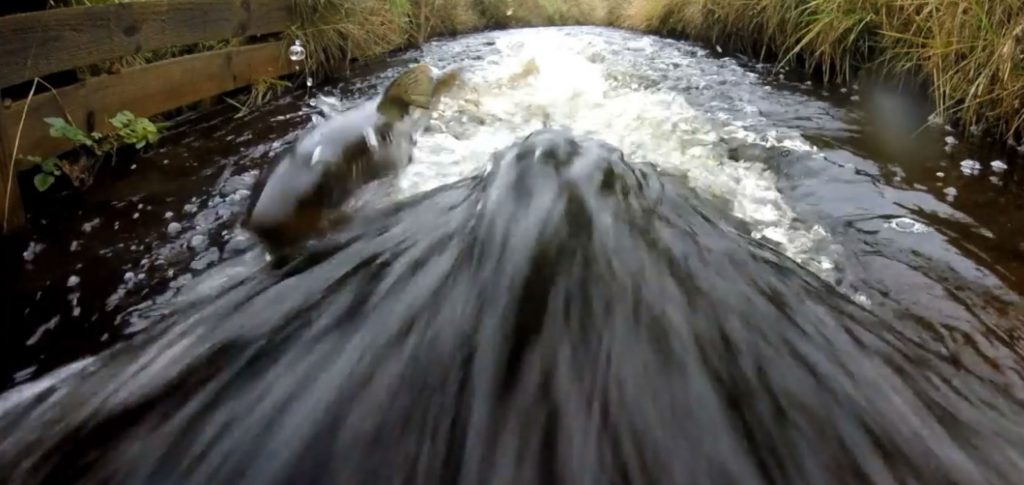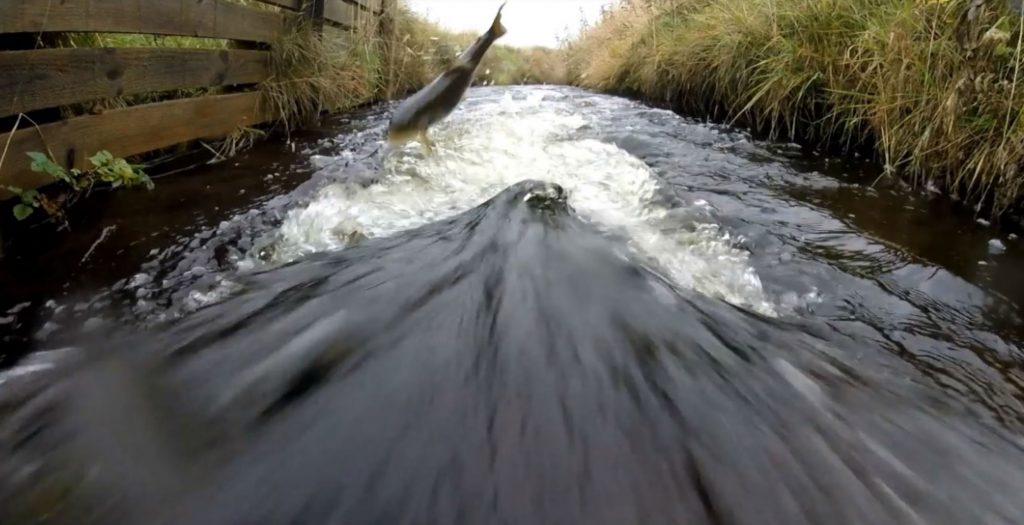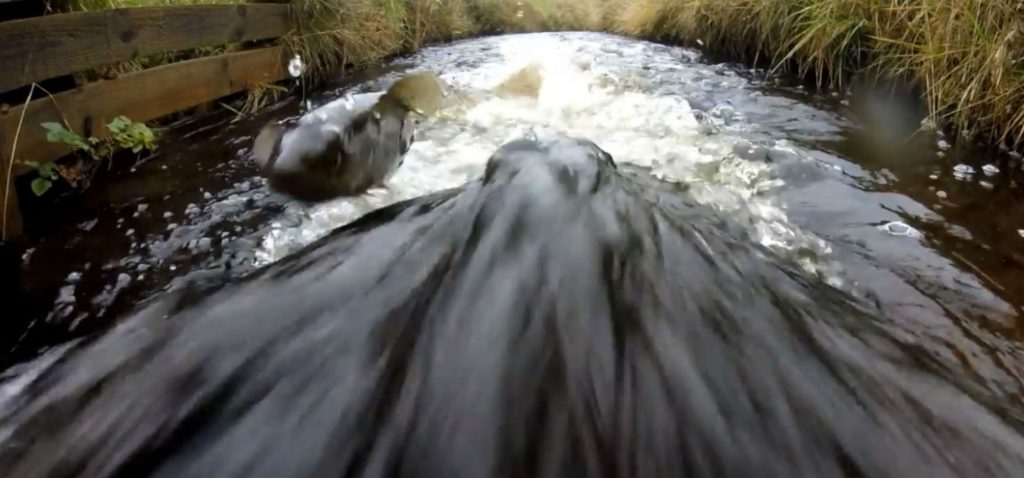REMARKABLE video shows trout leaping from a fast-flowing stream in the mountains above Loch Ness to get to their spawning grounds.
The freshwater wild brown trout are part of a “glacial relic” population that have been cut off from the rest of their species for around 10,000 years.
The fish – showing the same determination and agility as salmon – smack into the camera as they jump inside a culvert which takes them under a road.
The footage was shot by the Ness District Salmon Fishery Board to demonstrate the need to keep ancient breeding routes open to the vulnerable population of fish.
The advance of the last ice age “trapped” groups of trout in the hills above Loch Ness and elsewhere.
Even when the ice disappeared, around 10,000 years ago, it had altered the flow of rivers to the extrent that populations were cut off.
Posting the clip online the Inverness-based fishery board, wrote: “The annual migrations of wild brown trout are all too often overlooked when considering development proposals in areas where salmon and sea trout are absent.

“This footage demonstrates the importance of maintaining free passage in even the smallest of watercourses. The good news is that fish can negotiate this particular obstruction with evidence of successful spawning upstream.”
A number of trout are seen in the footage swimming and jumping towards the culvert – a tunnel carrying water under a road or path.
Some of the intrepid fish are seen leaping into the camera as they try and make their way up stream , with one seen swimming against the strong current under the camera.
The fish in the rural burn weigh around half a pound and live their whole lives in the small body of water.
Speaking about the remarkable clip director of the fishery board, Chris Conroy, said: “It was taken above an impassable falls in a small tributary of Loch Ness at about 1000 feet altitude.

“These are what we would call ‘glacial relic’ trout populations, i.e. they have been isolated in this area since the last ice age.
“Trout all over the Ness system are beginning to spawn at this time of year. Many people think that it is only salmon and sea trout that migrate, however brown trout also do so even in the smallest of burns.
“This burn is only one metre wide and the fish about half a pound in weight and most people don’t even realise it supports a trout population.”
The burn lies above an impassable fall, meaning the fish in this one area of the water could vary genetically from those further downstream as the two populations can’t mix.
Chris explained: “Trout above falls could be genetically different as they cannot mix with those below the falls.”
The board are eager to raise awareness about these isolated bodies of water and the fish living in them.
He added: “We are keen to make people aware that they could be in a burn near you so need to be considered during development proposals and any disturbance during the spawning season should be avoided.
“It is vitally important that brown trout are taken into consideration during the consultation period for wind farms, forestry plans, etc. This particularly relates to the creation of access tracks to prevent the blockage of burns.”
Barriers like weirs can prevent resident brown trout from accessing spawning areas and habitat vital to spawn and survive.
The video has attracted widespread interest from viewers, having been watched by over 17,000 people.
Andrew Presley wrote: “Well bugger me, who would have thought fish in such a small burn”
Derek McLay said: “Going the extra mile to get fantastic footage. Superb.”
Simon Quirk responded: “Cracking video, although I think some might have a sore head whacking your camera”
Brown trout are found throughout Scotland and are an extremely variable species in both habit and appearance due to various isolated populations.
The fish filmed in video are nestled above an impassible fall, meaning that fish from further down stream can’t acess the burn.
Between October and December brown trout return to their natal areas to spawn. Their eggs – 4 to 6 mm in diameter – are buried in gravel in small streams, usually from 1 to 5 metres wide.


